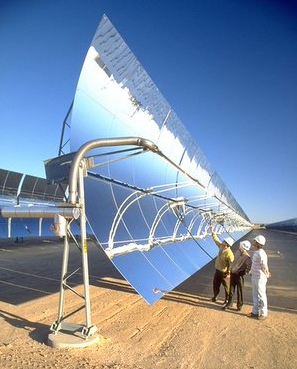Thios I find interesting. Is that the install charge including contractor mark-up? Are there sources where you can access the pieces of a system at wholesale and then cut the price significantly - or is this the cost of materials?
As a contractor I know there are many things we where the mark-up is incredible and yet the public just thinks "it is what it is". Are there sources? A while back I tried to do some research, but I got sidetracked and forgot about it.
Any insight?
$20k-$30k is the cost of a very modest system + inverter & Backup with no installation.
Here's a amazon page with a pretty reputable solar panel. $2.49 per watt for a monocrystaline system (Cheapest cost per watt, highest space requirement). [ame=http://www.amazon.com/Ramsond-Monocrystalline-Photovoltaic-Battery-Charging/dp/B005QUALBW/ref=sr_1_1?ie=UTF8&qid=1349613287&sr=8-1&keywords=100+watt+solar]Amazon.com: Ramsond 100 Watt 100w W Monocrystalline Photovoltaic PV Solar Panel Module 12V Battery Charging: Patio, Lawn & Garden[/ame]
As I said before, you're looking at 4kw to 6kw to replace the needs of the average household. So using those panels you would be at $9960-$14,940. This is for the panel system alone, no backup, no inversion , no contractor work.
For the inverter, you're looking at around $1k for a good system. Here's a pretty decent one that is 6kw, but for a normal house I'd say you should get much more. [ame=http://www.amazon.com/Power-Bright-PW6000-12-Inverter-6000/dp/B002EA22YQ/ref=sr_1_5?s=lawn-garden&ie=UTF8&qid=1349613422&sr=1-5&keywords=solar+inverter]Amazon.com: Power Bright PW6000-12 Power Inverter 6000 Watt 12 Volt DC To 110 Volt AC: Patio, Lawn & Garden[/ame]
Ok , so now you have panels & a inverter, you can power stuff as long as the sun is out now. However most energy is used during the evenings rather than the mornings as this is when people is home, so it's not practical at all. Now *Most* people will do a grid-tie system that will sell the electricity being produced back to the power company, then they buy the power back from the company when they need it. This is of course doesn't help you out one bit if the grid goes down, it just gives you a feel-good feeling that you're saving trees & Bambi (Although you're really not because each panel produces a ton of arsenic & other heavy metals that kill all sorts of life, but that's another point).
So, for a GOOD system, you need to integrate a battery backup system. A quality system costs about $200-$2,000 per KWH of storage. Now, some people are happy to pay for the $2k/kwh system but they're idiots and are getting scammed by solar companies who make up the lion's share of consumer solar technology companies.
So, I would build my own system out using quality solar batteries that are going to last more than 2 years (Granted, they will need replaced every 5 years or so). Here are 1836 watt/hr batteries for $520 , or $283 per KWH. I would go with a 10kwh backup which will be $5200 or so.
So, Now you have a $10k solar panel array, $1k of inversion and a $5k battery backup system , putting us at $16k of cost. Throw in about $2k worth of high-quality connections, mounting brackets and other stuff too. This is all DIY pricing mind you, and a contractor will mark it up no less than 50% excluding labor. So , this puts us at a minimum pricing of $18k for the DIYer solar guy. A contractor as I stated will provide a $20k-$30k estimate, but his system won't really be doing much other than selling the power generated back to the grid, and then taking electricity from the grid when you're really going to use it.
been looking at this, what do you guys think?
LITE-Series Solar Stik
Desal is one of the most inefficient ways of doing things. If you were hell bent on doing dsal for water, I would use a solar steam desalinization system. You could put together one for around $1k that would put out no less than 20 gallons a hour. Heck, I bet for under $5k I could put together a system that would do 10 gallons a MINUTE using a solar steam boiler to desal.
Water purification is typically a power-intensive job. Desal would be the last thing I would be doing in a small village or remote area of the world. For $1,000 you could put together a nice solar collection panel and one of [ame="http://www.amazon.com/Hydro-Logic-Stealth-Customized-Reverse/dp/B00286SOKM/ref=sr_1_2?s=lawn-garden&ie=UTF8&qid=1349614420&sr=1-2&keywords=reverse+osmosis"]these[/ame] and do around 150 to 200 gallons of clean water a day. Granted RO isn't as pure as desal water, but it will work for 99% of applications, and if you need further treating you can do it the absolute easiest way - chemicals. I know greenie-weenie types hate to think of chemicals, but realistically you can treat 1,000 gallons of water with chemicals for about 1 cent of cost. I can carry enough chemical in a 1qt glad ziploc bag to treat no less than 10,000 gallons of water. The big benefit off of this $1k solar system is that you'd also produce plenty of extra power to charge things like phones & radios. This is a bit cheaper than the $13k-$20k system that Luke is fawning over.


